Hobby Boss' 1/48 scale
Focke-Wulf Fw 190 V18
"Kanguruh"
by John Miller
|
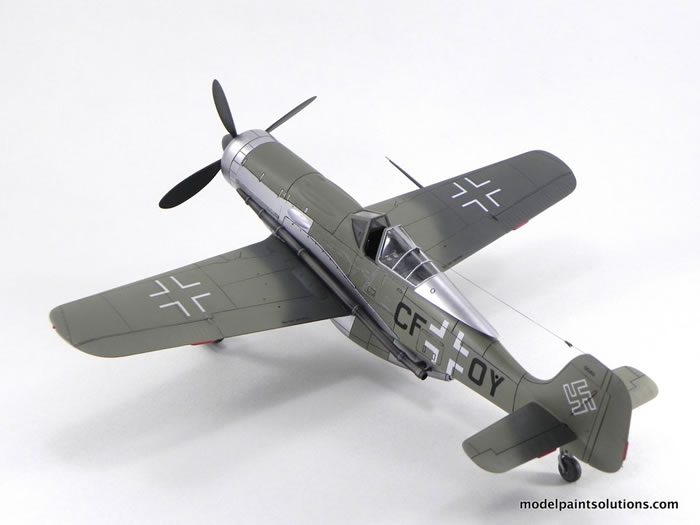
|
Focke-Wulf Fw 190 V18 "Kanguruh" |

Hobby Boss' 1/48 Fw 190 V18 Kanguruh is available online from Squadron for $32.19
Background
Kurt Tank’s masterpiece, the Fw-190 Würger was a mainstay of the Luftwaffe fighter force until the end of WWII. Its BMW 801 radial delivered sufficient performance at low and medium altitudes for the 190 to be an able adversary for most allied aircraft. High altitude performance was greatly hampered however, by the lack of a turbo supercharger. Multiple engineering difficulties prevented the addition of a supercharger unit to a BMW-powered Fw-190.
To solve the problem, Focke Wulf proposed the installation of 12-cylinder, in-line Daimler-Benz or Jumo engines into 190A series airframes as part of the company’s response to the Höhenjäger (High-Altitude Fighter) development program instituted by the RLM in 1942.
Multiple airframes were dedicated to the program and received various combinations of new alloy fuselage components, modified engines, pressurized cockpits/canopies, four-bladed propellers, and Hirth TK-11 turbo superchargers. For the 18th prototype the Hirth turbo supercharger unit was mounted on the belly in a large, streamlined housing giving the V18 the appearance of a Kangaroo complete with pouch: the name stuck.
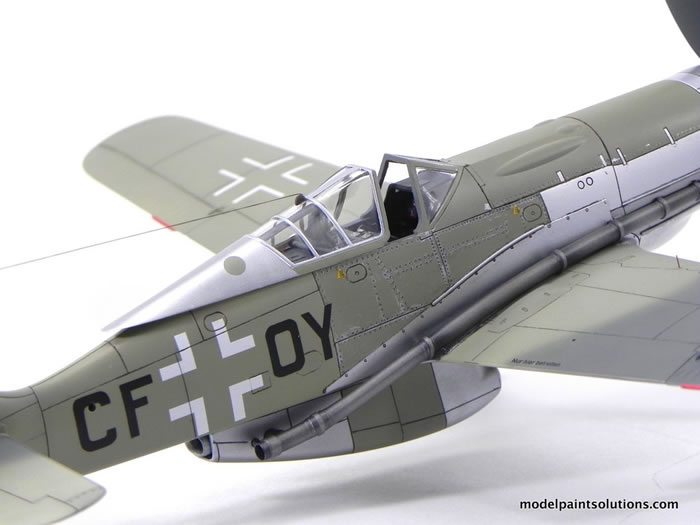
The Hirth turbo supercharger was an exhaust-driven unit that provided pressurized air to the engine thereby boosting performance at high altitude. On the V18, hot exhaust gasses were captured at the engine exhausts by heavy gauge steel exhaust tubes that ran to the trailing edged of the wing conveying the hot gasses to the Hirth unit on the belly. To protect both airframe and pilot from the extreme heat generated by these tubes, alloy sheet coverings were affixed to the fuselage sides.
In addition, the V18 was fitted with enlarged wing-to-fuselage fillets within which the tubular exhausts snugly fit. Additional airframe modifications included an enlarged vertical stabilizer and rudder (similar to that used on the Ta-152) and a four-bladed propeller.
Initial flight test results were disappointing. Chief Focke Wulf test pilot Hans Sander reported excessively high coolant temps and pronounced engine over-heating. Despite this, modification and testing of the V18 (and other similar prototypes) continued. The Känguruh made 66 flights totaling 42 hours of flight time. When the project was cancelled in 1944, many of the surviving airframes were incorporated into development of the D-9 Dora and the ultimate version of the Fw-190 series, the Ta-152.
(Edited from Focke Wulf Fw190 Volume one 1938-1943 by Richard Smith and Eddie Creek; reference provided below)
The Kit
This Hobby Boss Fw-190 V18 (kit #81747) is molded in 68 light grey and 2 clear plastic parts. The modest decal sheet provides markings for one aircraft, the V18. The moldings are crisp with no flash and the inscribed panel lines and details are nicely done and appropriate for this scale. There are, however, a few notable inaccuracies.
One issue is the nose cowl. Multiple photos of the V18 show that the dorsal part of the cowl had two circular covers instead of the large nostril-like intakes as depicted on the kit part. This is easily fixable so to match available photographic evidence; I built my V18 sans nostrils.
The most noticeable inaccuracy is the wing to fuselage fillets. The Känguruh had fillets that were enlarged and modified with recessions into which the overlying exhaust tubes fit. The kit parts are standard wing fillets that would be very difficult to modify.
Other than these issues, the kit accurately captures the nose section, enlarged rudder and vertical stabilizer that are characteristic of the Känguruh.
My normal modeling diet is rich in Special Hobby, MPM, and RS: high-fiber, limited-run kits. I’m accustomed to sweeping plastic shavings and dust off my bench after every build session.
Not so with this kit. The fit of the major parts is spot-on. With the exception of a few goodies from the spares bin, the kit was built out of the box. Although the kit has accuracy issues (above), the inaccurate parts fit together beautifully resulting in a fast and effortless build J
As usual, the build started with the cockpit, which was painted LifeColor RLM-66 lightened 10% with white. After the cockpit details were picked out with LifeColor paints, the tub and fuselage interior were sprayed with Alclad Aqua Gloss and the assemblies were given an wash with Tamiya Dark Brown Panel Line Accent Color.

The lower chin cowl (part C2) has very prominent sink marks behind the intake that have to be filled since this part will have a metal finish. This was done with Mr. Surfacer 1,000, sanded smooth, and blended with a 3600 Micromesh pad.
Volume one of the Smith and Creek Fw190 trilogy has 6 excellent photos of the V18 four of which are full-page reproductions showing re-worked rivet lines in the cockpit area of the fuselage.
The rivets appear to have been installed after the skin was painted RLM-02, as each line had unpainted rivet heads and scratches. In preparation for replicating this, the rivet lines were duplicated with an embossing tool and photographs as a guide.
One puzzling aspect of this kit is the lack of a headrest. A quick trip to the stash produced the appropriate part from a sympathetic Tamiya Fw190 D-9 willing to help out.
The inaccurate decking behind the pilots seat was smoothed with a sanding stick and a photo-etch over-lay from an old detail set was glued in place.
As mentioned earlier, the Känguruh’s nose cowl differed greatly from the corresponding kit part. The offending intakes were plugged with sprue and smoothed with sanding sticks. Circular patches, fashioned from Bare-Metal Foil, were pressed in place.
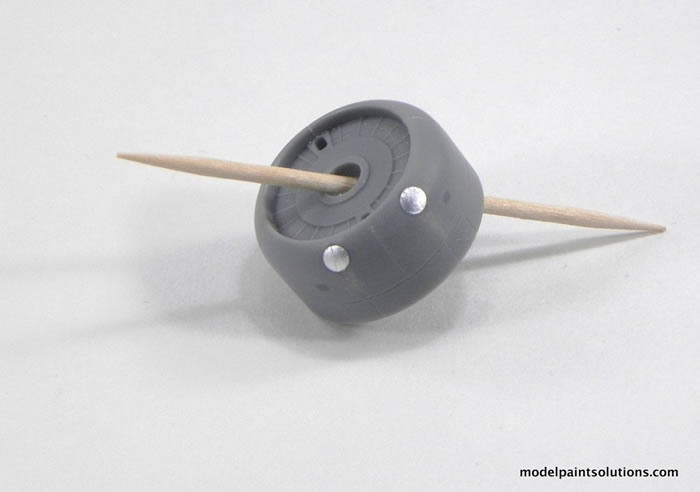
The wing parts fit together perfectly requiring no filler whatsoever however, the gun ports on the Känguruhs’ wing were faired over. To duplicate this, the holes were plugged, sanded smooth, and covered with small circles of Bare-Metal foil cut with a PE stencil.
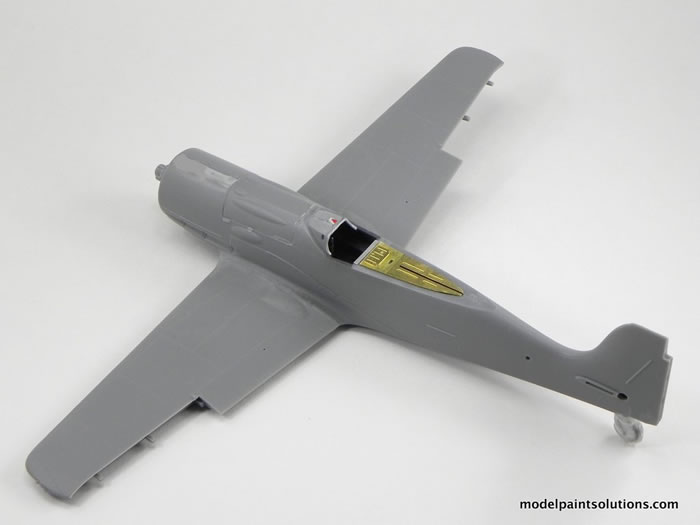
The main gear and retraction mechanisms are beautifully cast and required little preparation.
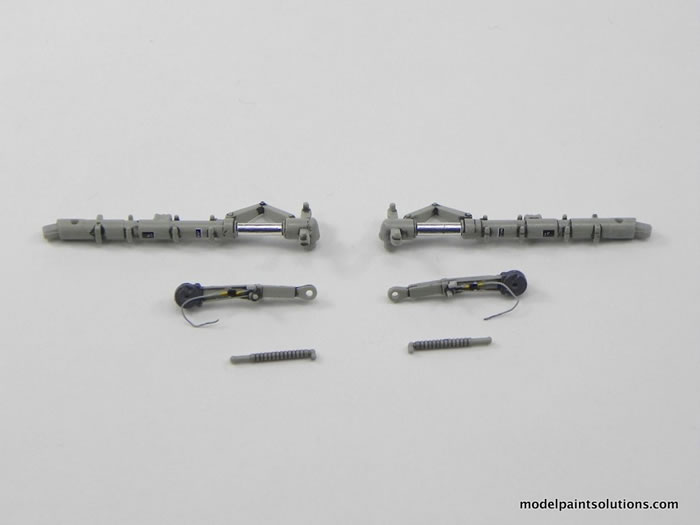
Brake lines were fashioned from fine solder and the small electrical relay boxes on the retraction arms were scratch built.
In preparation for multiple metallic lacquers, the model was primed with Gunze Mr. Color Gloss White.
Using the photographs as a guide, the metal panels on the Känguruh were replicated using multiple metallic paints including Gunze Mr. Color Silver #8, AK Aluminum (AK479), AK Dark Aluminum (AK480), AK White Aluminum (AK478), and Alclad II Dull Aluminum (ALC-117).
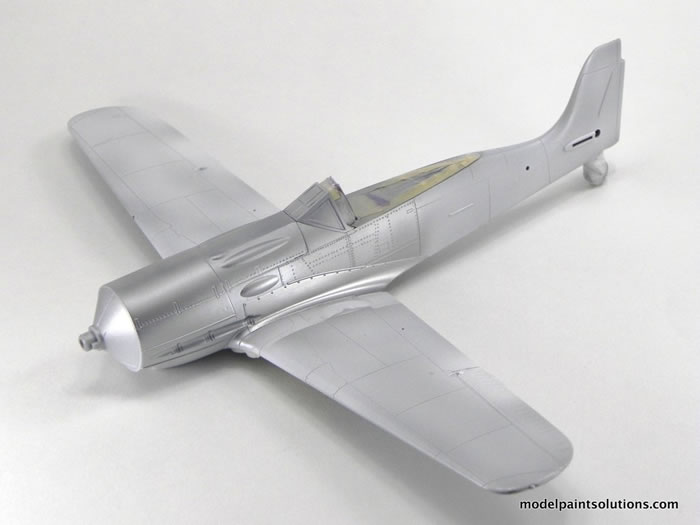
With the metallic colors sprayed, I set about spraying RLM-02 on the fuselage side panels that were to be chipped. After appropriate masking, the side panels and upper fuselage decking previously shot with Gunze #8 were sprayed with LifeColor RLM-02.
When the RLM-02 was dry, a Flexi-File polisher/finisher stick, cut at an angle, was used to carefully remove the RLM-02 paint from the rivet lines and create scratches on the side panels. To prevent additional damage from occurring, the delicate panels were over-sprayed with Alclad Aqua Gloss.
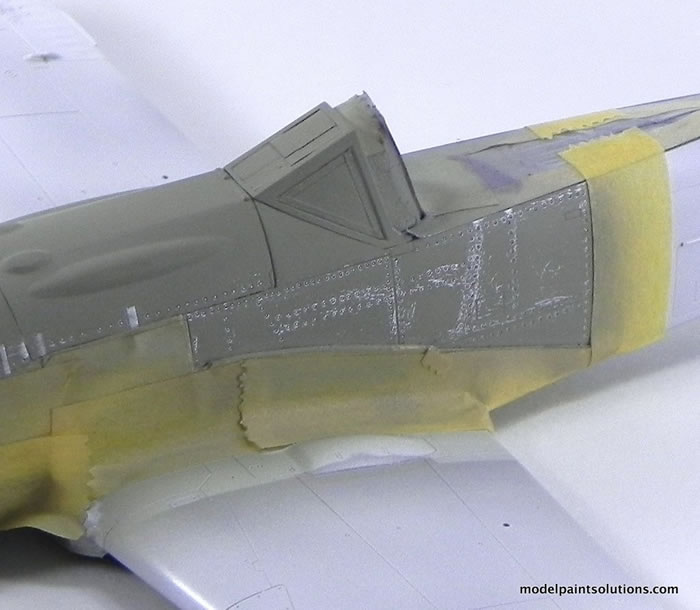
Prior to spraying the rest of the model, the painted nose section and fuselage side panels were masked and the remainder of the scheme was applied using LifeColor RLM-02 and RLM-74. Of note are the rather soft lines where the RLM-74 meets the 02.
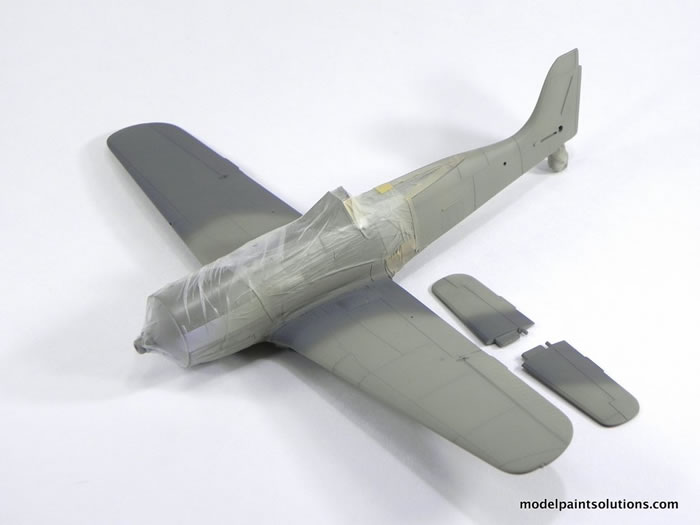
After a coat of gloss, the kit decals were applied with Micro Set/Sol and conventional methods. Available photos of the Känguruh show very little wear so weathering was kept to a minimum. Panel lines were brought out with Tamiya Dark Brown Panel Wash.
The aerial was made from Uschi rigging material (#4005) and attached with white glue and a final coat of Vallejo Satin varnish sealed the deal.
I really enjoyed this build: fast, easy, and unique. To my eyes the aircraft of the 190 stables have some of the most pleasing lines of all the WWII single engine fighters. The V18 in particular, strikes me as having a functional lethality that’s distinctive. It’s an interesting looking airplane long on my “to build” list. So much so, I started the kit as soon as I got it home without the normal multi-year ageing process in the stash.
Although the kit could be more accurate, the finished product looks like a V18 and sits like a V18 so for all but the purist, it’s a V18. The engineering on this kit is top notch making assembly a hop, skip, and a jump (sorry again).
The distinctive paint scheme incorporating bare metal and RLM-02 really sets it apart from the well-known Fw190 schemes with which we’re all familiar. It strikes an awesome pose on the shelf and I recommend it to beginner and “experten” alike.
More details and photos from this build can be found on my site, ModelPaintSolutions.com.
Cheers!
-John
References:
-
Focke Wulf Fw-190 Volume One 1938-1943
Richard Smith and Eddie Creek
Ian Allen Publishing, 2011
ISBN 978-1-906553-729-6
-
Special Drawings Focke Wulf Fw-190c/D-9/Ta-152 Part 2
Radek Vavrina
CMK Photo Hobby Manual, 2007
ISBN 978-80-903778-5-1
Model and Text Copyright ©
2017 by Model Paint Solutions Inc.
Page Created 7 July, 2017
Last Updated
7 July, 2017
Back to
HyperScale Main Page

|
Home
| What's New |
Features |
Gallery |
Reviews |
Reference |
Forum |
Search